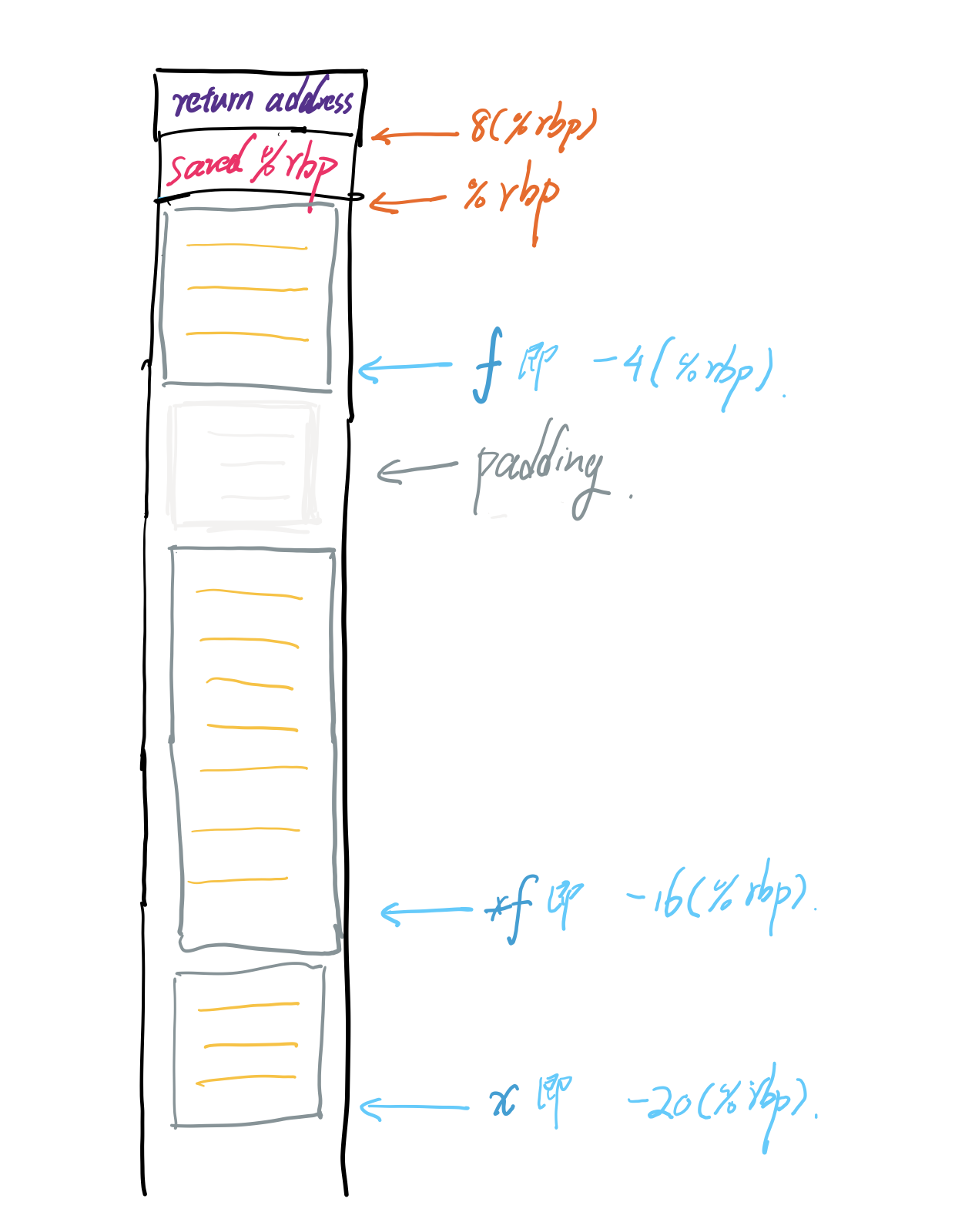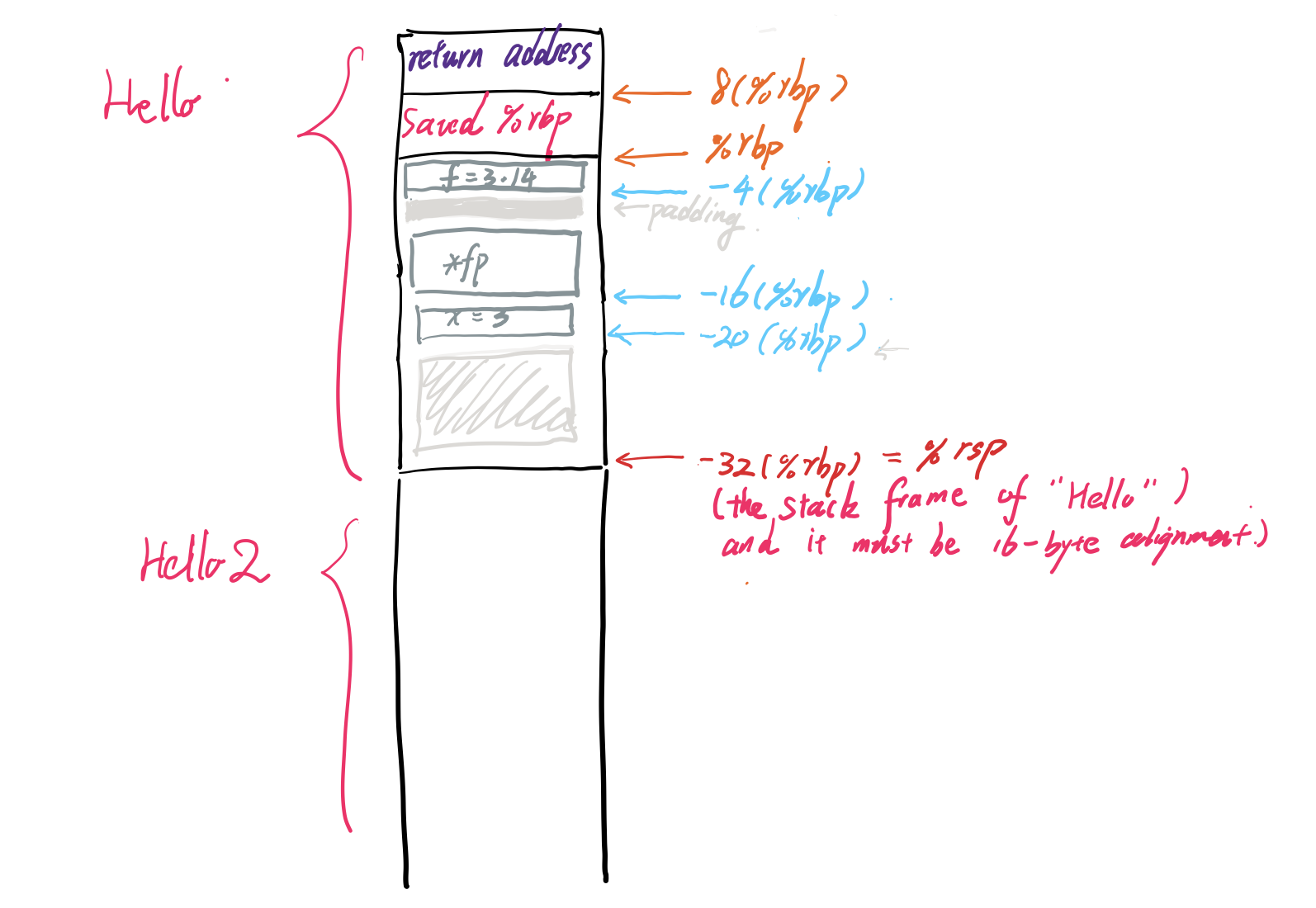Categories:
Byte alignment of x86_64 Linux runtime stack
| [Byte alignment of x86_64 Linux runtime stack | Develop Paper](https://developpaper.com/byte-alignment-of-x86_64-linux-runtime-stack/) |
epc-14-haase-svenhendrik-alignmentinc-presentation.pdf (vi4io.org)
x86_64 always uses 16 byte in the stack aligment
Not sure about Windows…
Simple Calling
A simple function
void hello(){
float f = 3.14;
float *fp = &f;
int x = *(int *)fp;
}
The assembly code.
.section __TEXT,__text,regular,pure_instructions
.build_version macos, 12, 0 sdk_version 12, 3
.section __TEXT,__literal4,4byte_literals
.p2align 2 ## -- Begin function hello
LCPI0_0:
.long 0x4048f5c3 ## float 3.1400001
.section __TEXT,__text,regular,pure_instructions
.globl _hello
.p2align 4, 0x90
_hello: ## @hello
.cfi_startproc
## %bb.0:
pushq %rbp
.cfi_def_cfa_offset 16
.cfi_offset %rbp, -16
movq %rsp, %rbp
.cfi_def_cfa_register %rbp
movss LCPI0_0(%rip), %xmm0 ## xmm0 = mem[0],zero,zero,zero
movss %xmm0, -4(%rbp)
leaq -4(%rbp), %rax
movq %rax, -16(%rbp)
movq -16(%rbp), %rax
movl (%rax), %eax
movl %eax, -20(%rbp)
popq %rbp
retq
.cfi_endproc
## -- End function
.subsections_via_symbols
The function frame is known in the compile time.

Note:
- X86_64 is little endian (think about how this will affect the starting address of an object)
- The pointer type
*fpmust be 8 byte aligment!
Nested Calling
Simple Nested Calling
We will see how nested calling works (and why frame pointer is important).
void hello2(){
int num = 0;
}
void hello(){
float f = 3.14;
float *fp = &f;
int x = *(int *)fp;
hello2();
}
_hello2: ## @hello2
.cfi_startproc
## %bb.0:
pushq %rbp
movq %rsp, %rbp
movl $0, -4(%rbp)
popq %rbp
retq
_hello: ## @hello
## %bb.0:
pushq %rbp
movq %rsp, %rbp
subq $32, %rsp
movss LCPI1_0(%rip), %xmm0 ## xmm0 = mem[0],zero,zero,zero
movss %xmm0, -4(%rbp)
leaq -4(%rbp), %rax
movq %rax, -16(%rbp)
movq -16(%rbp), %rax
movl (%rax), %eax
movl %eax, -20(%rbp)
callq _hello2
addq $32, %rsp
popq %rbp
retq

We can see there are a lot of padding in the frame, this is to ensure the memory alignment.